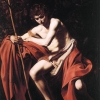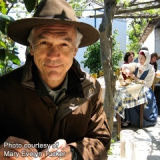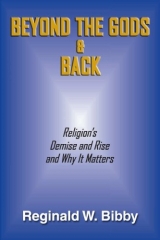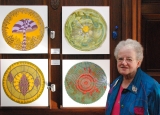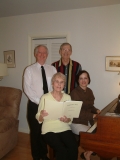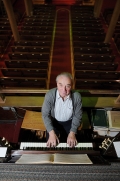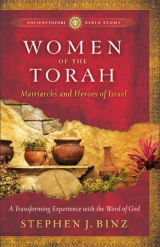Rediscovering Augustine’s Confessions
Garry Wills has written a short book that teaches us how to read a longer book. If we follow Wills’ instructions we will discover new riches in St. Augustine’s seminal classic, The Confessions.
This book is the third in a new series called “Lives of Great Religious Books.” The series is meant to make classic religious texts accessible to the general public.
Wills is the right choice to make Augustine’s Confessions come alive for contemporary readers. Wills has studied the bishop of Hippo’s writings for a long time, both as an academic historian and a Christian believer. His ready familiarity, one might even say his friendship, with the person of Augustine shines through, making the Confessions come to life. Along the way, Wills provides helpful insights into thorny theological problems and breaks open elements of Augustine’s basic teaching on God, human beings and the spiritual life.
Reading the Confessions is hard work, partly because we live in a very different kind of culture and world. With the passing of 1,600 years, we read, remember and reflect differently.
Spirituality on display at Caravaggio exhibit
OTTAWA - As Caravaggio’s personal life unravelled, his paintings became more deeply spiritual, perhaps due to his need for mercy, says an art historian and expert on the 17th century Italian master.
The more sorrow he experienced, the more spiritual his work became, said University of Vienna art historian Sebastian Schütze at a June 15 preview of the National Art Gallery’s international loan exhibition Caravaggio and His Friends in Rome that will be in Ottawa until Sept. 11.
As the hot-tempered artist became “the bad boy on the run” after having killed someone in a duel, his work became richer and more reflective and less inclined to show off his technical virtuosity Schütze said.
The painting that closes the exhibit, St. Francis contemplating a skull, was painted around the time that the artist fled from Rome, and shows a deep sense of spiritual reflection.
The artist’s short life did not reflect a one-on-one correspondence between a virtuous life and great art, but 400 years after his death at the age of 38 in 1610, Caravaggio remains one of the greatest painters of all time and the most topical of the great masters today, said Schütze.
The origins of Christian art
VATICAN CITY - A newly restored third-century family tomb shows the gradual flowering of Christian funerary art as it grew out of ancient Rome’s multireligious and pagan cultures, said Vatican archaeologists.
While early Christian catacombs offer clearer examples of early Christian iconography, the burial chambers of the Aureli family mix pagan, Christian and Gnostic symbolism, representing “an evolving cultural process” at work in Rome at the time, said Msgr. Giovanni Carru at the June 9 unveiling of the tomb.
The figures on the tomb’s walls are “the first step toward the religious transformation of the city” of Rome, from being a rich mix of pagan cults, Jewish thought and Christianity to a culture that came to embrace Christianity both as a religion and a new source of ideas and art, said Carru.
A Christian journey into our universe
TORONTO - Science and religion were never at war for the creators of Journey of the Universe, a film that will hit its first Canadian audience June 15.
The documentary film, co-written by religious historian Mary Evelyn Tucker and evolutionary philosopher Brian Thomas Swimme, is rooted in the work and ideas of cosmologist and Passionist Father Thomas Berry. It tells the story of the universe over 14 billion years, Tucker explains, integrating “the best discoveries of modern science with human history, art, philosophy and religion.”
“Where do we come from and why are we here? This film tries to address these questions,” said Tucker, who will accompany her film at its Canadian premiere, hosted by the Elliott Allen Institute for Theology and Ecology at the University of St. Michael’s College at the University of Toronto.
Journey of the Universe opens with Swimme, the film’s host and narrator, on the Greek island of Samos. As Swimme travels the island, he guides the audience through time and space — using vivid footage of the natural world and beyond — from the beginning of the universe until now.
A Catholic apologist brashly gets it right
 One thing needful in our confused time, it has long seemed to me, is a lively polemic in favour of the Catholic faith. Thanks to Michael Coren we have one in his new book Why Catholics are Right.
One thing needful in our confused time, it has long seemed to me, is a lively polemic in favour of the Catholic faith. Thanks to Michael Coren we have one in his new book Why Catholics are Right.
It is sure to confound and infuriate enemies of the Church while delighting and instructing Catholics who take the time to read and learn from it. Even the title is provocative; today’s ecumenist likes to gather around the campfire interspersing choruses of “Kumbayah” with choruses in praise of other denominations, even other religions, and here comes brash Coren suggesting that Catholics have got Christianity right and all others are (to a greater or lesser degree) wrong. Well, who does he think he is making such triumphalist assertions?
In our local paper a retired United Church minister was apocalyptic while unfavourably reviewing Coren’s book; now I cannot say how Coren reacted to this review, but I have long rejoiced in any criticism emanating from the United Church of Canada, which I consider the pons asinorum of contemporary churchmanship.
Bibby moves beyond his traditional theories
Reginald Bibby has always told the digital story of religion in Canada. Everything was explainable in numbers. In Beyond the Gods and Back, Bibby finds an analogue tale behind the numbers — a tale of shifting religious perceptions and motivations.
Bibby, a sociologist at the University of Lethbridge, has been studying religious involvement in Canada since the mid-1970s, producing four books on the subject. His approach has been shaped by two academic perspectives — secularization and rational choice theory.
Bibby talks about a marketplace for religion that is characterized by constant but changing demand and a varying number of suppliers, each vying for a greater share of the market. According to this theory, religious organizations will be more or less successful in the religious marketplace depending on their ability to meet contemporary needs of their members.
Art as conversation with God
Whether your artwork rivals the ceiling of the Sistine Chapel or is composed mainly of stick people, it’s a good enough tool for prayer on the Sacred Art Retreat.
The retreat, which first ran in 2003, explores using art as a way of achieving a deep intimacy with God. On May 27, more than a dozen retreatants began eight days of “walking and praying in the presence of God” at Invermara, a retreat house in Orillia, Ont. It’s the first of two retreats this summer.
“This retreat is not art therapy, it is a way of being in conversation with God,” said Sr. Virginia Varley, CSJ, who has been directing the retreat since 2006.
“It’s quite different for some people,” she said, adding that art is generally not thought of as a tool for prayer.
Couple’s musical celebration illustrates the life of Christ
If he who sings prays twice, Joan and Michael Maloney have four lifetimes of prayer between them.
The two singers are currently preparing for Behold the Man!, a musical celebration of the rosary, which premieres on May 29 at St. Mary’s Catholic Church in Simcoe, Ont. The repertoire, entirely composed by Joan Maloney, illustrates the life of Jesus through the joyful, sorrowful and glorious mysteries.
“I’ve always wanted to write a song cycle,” said Joan, who has performed professionally, composed and taught music her whole life. “And then one day at Mass, I was looking at the statue of the Blessed Virgin and it came to me that what I’d really like to do is write a song cycle honouring her and our Lord, and so I decided to write it on the rosary.”
The result was Behold the Man!, a 15-song program that features Joan, a soprano, husband Michael, a tenor, as well as pianist Linda Bonadeo-Boll and reader Michael Fidler.
Organist’s short stay lasts 60 years - and counting
When he arrived from Germany in 1951, the then 20-year-old Heribert Michel planned to stay in Canada for three years. He wanted to get work experience as an organist and choir director and learn a new language after graduating at the top of his class from Germany’s prestigious Regensburg Academy of Church Music. His uncle, a priest, expected him back in Germany to be the new organist and choir director when reconstruction of their parish, destroyed during the Second World War, was complete.
So much for those plans. Sixty years later, Michel remains in Canada. After meeting his wife, Suzanne, he chose to stay, settling in Peterborough, Ont., where the couple raised four children and now have 10 grandchildren.
The diocese of Peterborough is celebrating Michel’s six decades of service through his music ministry. On May 21, an anniversary Mass was to be held at St. Peter-in-Chains Cathedral, officiated by Bishop Nicola De Angelis, with a reception to follow. Among the special guests expected are MP Dean Del Mastro, MPP Jeff Leal, papal knights and Fourth Degree Knights of Columbus.
Catholic missions add to charm of historic Arizona
Like North America’s largest gem and mineral show every February. Like Kitt Peak National Observatory, which has the largest collection of telescopes — 26 — in the world. The Vatican Advanced Technology Telescope, though not associated, is nearby at Mt. Graham.
For snowbirders and those who simply love the myriad charms of the American southwest — from adobe architecture to jagged mountains and sweeping desert vistas — you can add the Spanish Catholic missions between Tucson and the Mexican border.
Interstate 19 between Tucson and Nogales, a distance of about 100 km, features two significant missions, both national historic sites. There are two other abandoned missions that can also be toured. There is also the presidio (fort) at Tubac, which protected the missions.
These missions form the most northern settlements of a string of 24 stretching well into Mexico’s Sonora state. Southern Arizona, of course, was once part of Mexico. But before that, when these missions were founded, it was part of colonial Spain.
An intelligent look at traditional Catholic beliefs
Women of the Torah: Matriarchs and Heroes of Israel
Abraham: Father of All Believers
David: Shepherd and King of Israel
Women of the Gospels: Friends and Disciples of Jesus
Peter: Fisherman and Shepherd of the Church
Paul: Apostle to All the Nations
(Brazos Press, softcover, $10 per volume).
For people interested in learning something about current Catholic Scripture scholarship, and more importantly want their lives to be inspired by the biblical stories, Ancient-Future Bible Study is a valuable instrument. Anyone who completes the meditations will be significantly more familiar with the Bible, and these books should inspire readers to learn more and pray more.
Lectio divina (sacred reading) is an “ancient art” for exploring the Word of God with mind, heart and imagination. It’s a way to experience Scripture as real communication with God, with reference to what the Bible texts meant in ancient times and their transforming power to change our lives into the future.



